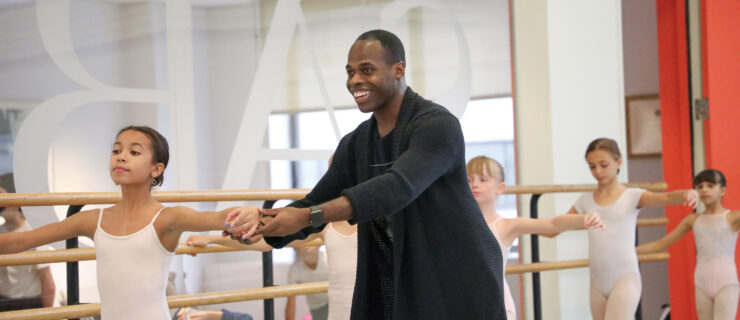This Program Uses Dance to Help Incarcerated Women Work Through Trauma
“I put on Lorde for a warm-up song,” says Lucy Wallace, recalling a dance class she was giving to a new group of students. “As soon as I started moving—literally just stepped to the right and moved my arm—this woman behind me said, ‘Oh! This is spiritual.’ ”
But she wasn’t the typical dance student, nor was this a typical studio. This woman is serving a life sentence at Denver Women’s Correctional Facility.
That was back in 2015, during Dance To Be Free‘s first class at a women’s prison. Since then, the nonprofit organization has expanded to 13 prisons across eight states, offering dance as a healing medium—and even providing teacher training—for incarcerated women.
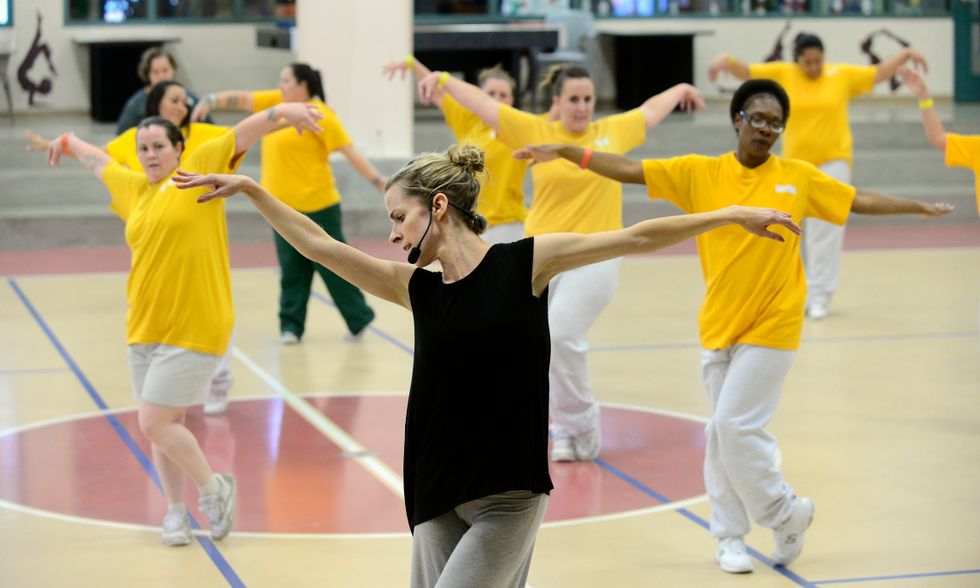
The idea for the program came about almost randomly, says Wallace, who has a masters in psychology and grew up studying ballet. At the time, she owned a studio in Boulder, Colorado, where she taught a basic adult movement class, also called Dance To Be Free. When she was toying with the idea of turning her studio into a nonprofit, a friend suggested that she create a program to bring dance to incarcerated women.
“It was so simple—the thunderbolt moment,” says Wallace. “Almost every single woman in prison is suffering from some sort of trauma. I knew that the physical movement would help them heal.”
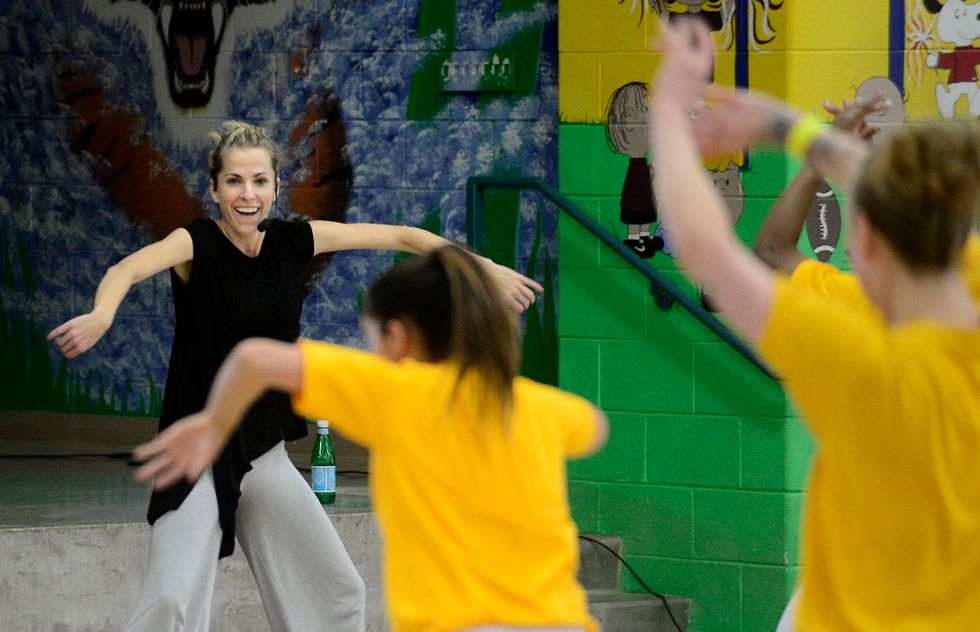
But, she says, prison was a totally foreign concept. “I had no idea what I was doing, I’d never been to a prison, I’ve never had family members in prison or any personal story about it.”
So her original idea was cautious: To film herself teaching at her studio, burn it onto DVDs and send them to a prison so women could follow along. “I look back on that and I’m like, ‘What was I thinking?’ But I was scared.” Wallace was encouraged to teach in person when she attended a training session for volunteers. About a month later, she held her first class at Denver Women’s Correctional Facility.
Wallace was floored by the initial feedback. Remember that student who immediately called out the spiritual nature of the class? “How did she know my intention was not just ‘Let’s exercise and have aerobics and burn calories’? I couldn’t believe she picked up on that so quickly.”
Wallace continued returning to Denver to teach weekly, one-hour classes to the facility’s general population. Anyone who’d earned the privilege could attend, regardless of their crime. “That was a real wakeup call for me. You can have someone serving a life sentence and someone getting out in a week in the same class.”
A typical Dance To Be Free class pairs emotive popular music—everything from Depeche Mode to Nicki Minaj to Eminem—with a high-energy blend of lyrical, hip hop and jazz movements. “They’re doing deep yogic breathing, stretching, moving, punching, kicking.”
More than anything, it’s about empowerment. “Sometimes we interview the women when we have permission to film, and they share their life story—addicted parents, sexual abuse, rape, neglect,” says Wallace. “They’re like survivors of war. The thing that’s really potent about dancing is it brings back control to your body, whether you’ve been pinned down or unable to run away or violated. When you dance, you’re in control. That’s so huge for healing.”
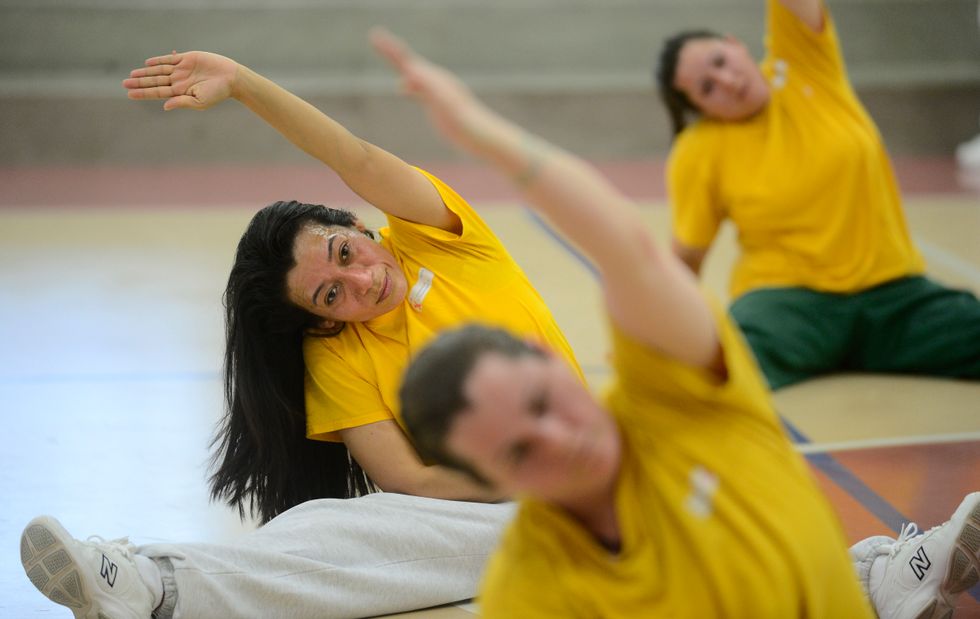
Within its first year, Wallace designed a teacher-training program, which involves dancing and guided journaling and equips incarcerated women with the tools to lead classes themselves. As momentum built, Dance To Be Free expanded into more locations, including Nebraska, Mississippi, Florida and even Hawaii.
Whenever she leaves a prison, Wallace donates a set of DVDs and CDs with the movement and music for 12 classes. “It’s 12 hours of original choreography, 150 songs and 150 routines that match up. Usually about five women in each training step up to teach, and I’ll say, ‘You guys are gonna hold the torch until we return.’ ”
“Now we’re at the point where we’re training the women how to lead the teacher training,” says Wallace. That recent development was inspired by one incarcerated woman, from Florida’s Lowell Correctional Institution and Annex, who took it upon herself to lead herself through the training. Wallace was impressed: “She has a master’s degree. She’s very optimistic. She’s older. Not a highly skilled dancer, which makes it even more interesting, but she has good insight.”
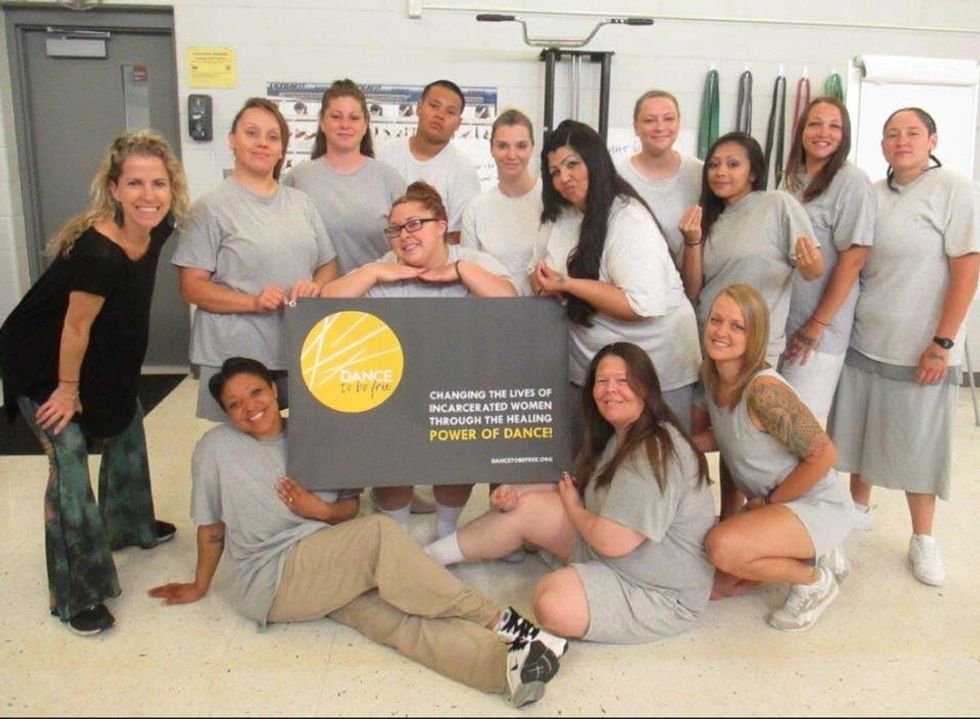 Courtesy Dance To Be Free
Courtesy Dance To Be Free
Though Dance To Be Free has only been in prisons for four years, the program has already come full circle in several ways. Wallace has since sold her private studio but continues to offer Dance To Be Free to the general public at another studio in Boulder. When she’s traveling to prisons across the country, she relies on a few of her formerly incarcerated students—now teachers—to substitute for her back in Colorado.
In addition to these relationships, Wallace tries to keep a close connection with other students who’ve left the prison system: “I’ll say, ‘Keep in touch—I can send you DVDs. Keep dancing. If you need a job recommendation or for me to talk to your parole officer, I will.”
And the choreography, which the women create with Wallace’s guidance during class, has taken on a life of its own: In Mississippi, they’re dancing to Macklemore’s “Glorious” for the warden. In Florida, the women perform for visiting family members. In Nebraska, they’re learning Mississippi’s choreography. “That’s the beauty of it. They dance each other’s movement.” Finally, when she returns to teach at the studio in Boulder, she’ll say, “This is from Virginia. This is from Florida. From Hawaii.”




